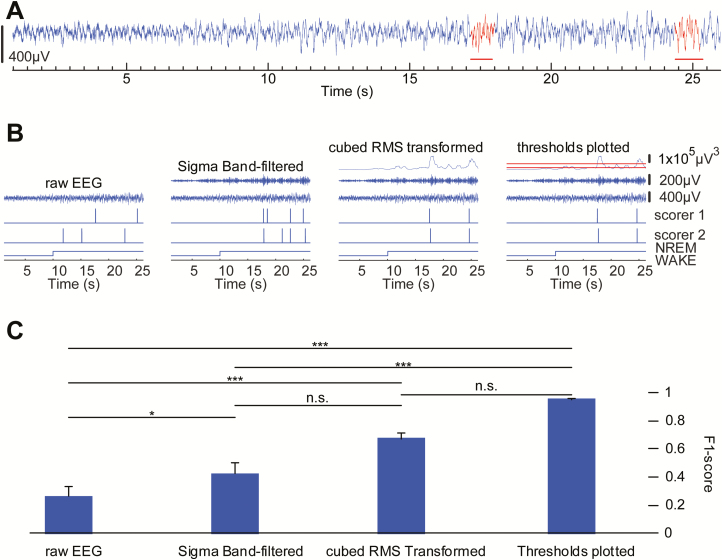Figure 1.
Manual sleep spindle detection becomes more reliable with progressive levels of data processing. Agreement between human scorers on the identification of sleep spindles is greater than F-score of 0.95 only when the EEG data is processed using the algorithm’s procedures. (A) Representative example of mouse cortical EEG data illustrates the difficulty in identifying sleep spindle activity (red horizontal line) in raw data. (B) Representative example of comparison of manual detection of sleep spindles between two experienced scorers. Agreement between detected events between scorers was very low using only the raw EEG trace but was greatly improved with availability of additional data processing, including (1) band-pass filter, (2) cubed RMS transform, and (3) thresholds plotted. (C) Interscorer agreement improved across each level of additional data processing. Agreement between human scorers on the identification of sleep spindles is greater than 0.95 only after providing scorers with all three levels of data processing to confirm detected events. *p < 0.05, ***p < 0.001.

